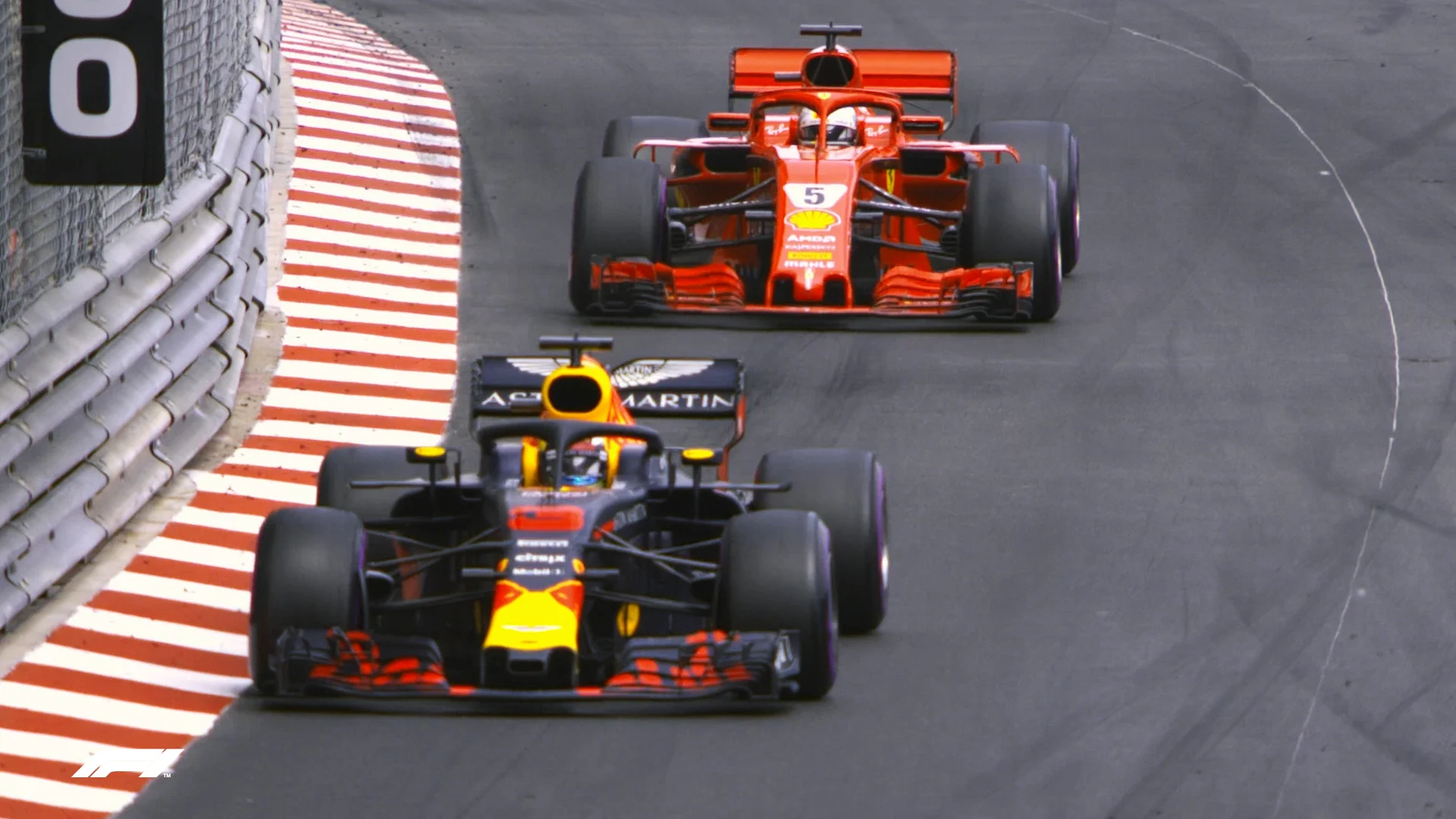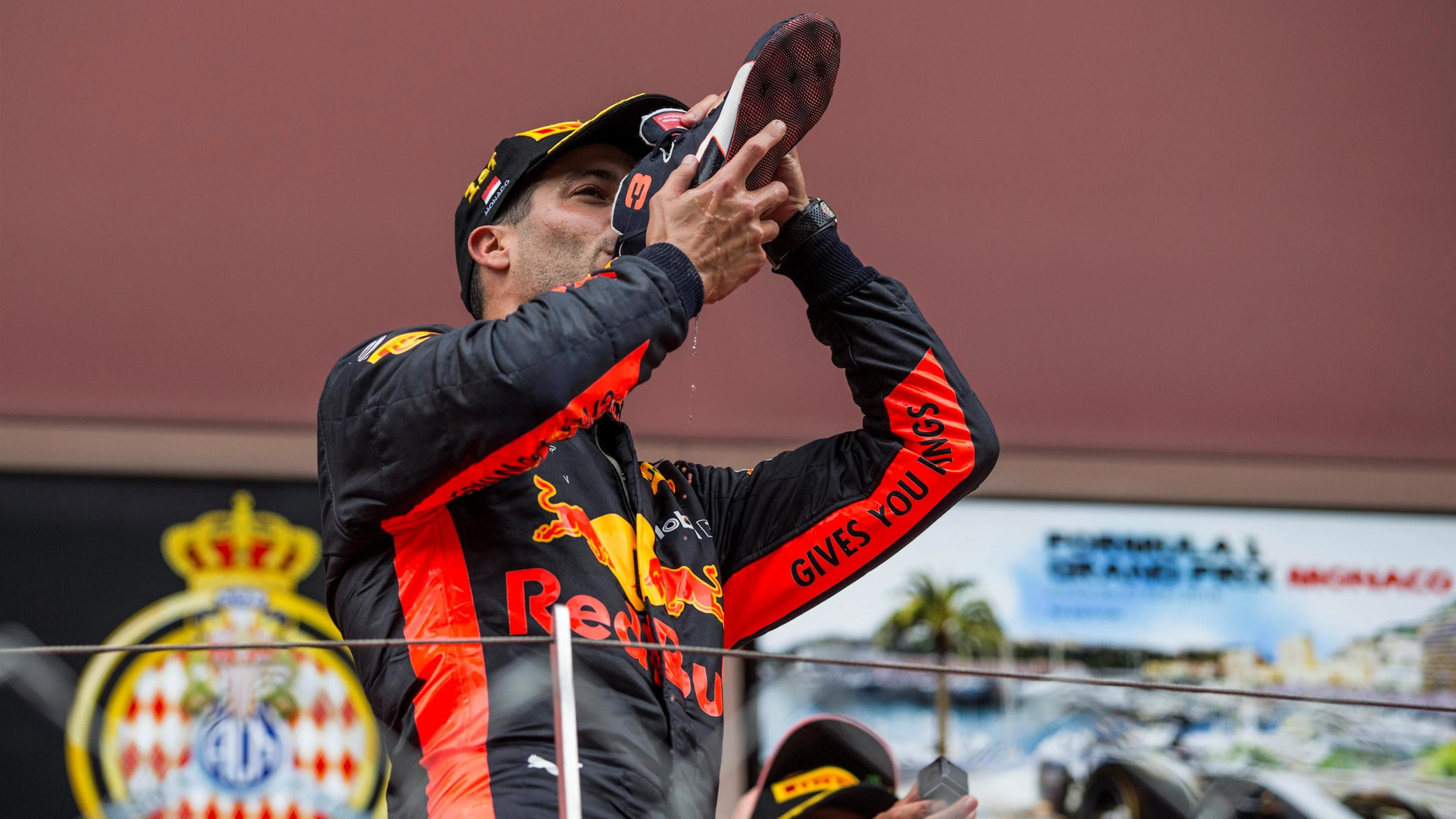Ferrari’s approach to the Monaco Grand Prix, Haas’ uncompetitive race and Daniel Ricciardo’s race boots post-Shoey – they are just three of the topics you were asking about this week. F1 journalist Mark Hughes, F1 editor Jonny Reynolds and F1 senior writer Lawrence Barretto provide the answers…

Ferrari's ambition in Monaco
JONNY REYNOLDS SAYS...
First of all I think it's unfair to say Ferrari showed a lack of ambition - they, and Sebastian Vettel, would have been desperate to win in Monaco on Sunday, and it was clear from their radio messages that the German was being urged to push and - at the very least - try to force at mistake from Ricciardo.
But try as he might, Vettel couldn't find a way of seriously challenging the Australian, even with the Red Bull driver considerably down on power. Why? Well, firstly Monaco's unique characteristics (ultra twisty, not power sensitive) mean that Ricciardo's issues were far less damaging than they would have been at another circuit.
In Canada, our next stop, he'd have been quickly swallowed up, but in Monaco he was able to manage the situation - supremely skilfully it has to be said - by, amongst other things, making the most of his car's superior cornering performance. This prevented Vettel from getting close - and crucially Ricciardo was able to do this without incurring excessive tyre wear. Vettel on the other hand struggled with his tyres - as did Lewis Hamilton - and the problem was exacerbated when he got closer to the Red Bull.
Then, after the Virtual Safety Car period near the end of the race, Vettel struggled with tyre warm-up issues. So a combination of factors worked against him, though Vettel himself admitted that if Ricciardo hadn't had any issues, he would likely have been even further behind, such was Red Bull's superiority in the Principality.
Haas' Monte Carlo form
MARK HUGHES SAYS...
Hi Fletch. The Haas was just not generating the required tyre temperatures. When the rubber is too cold, it remains hard and brittle and cannot give anything like its normal grip. Why was the Haas affected in this way rather than other cars? There can be many reasons, but these are extremely sensitive tyres and Haas has a very small engineering group compared to other teams, with a far smaller tyre group. Occasionally this can catch them out.

Ricciardo's race boots
LAWRENCE BARRETTO SAYS...
Good question! We asked Red Bull and they told us there’s no set plan for what happens post-Shoey. Sometimes, the victim who drinks from it on the podium will keep it as a souvenir. Other times, it will go to charity. And others are thrown in the team wash and then kept in storage at the factory. While race suits and fireproof overalls are worn again after washing, Daniel Ricciardo never wears his race boots used for shoeys twice! In terms of who started the shoey trend, Ricciardo said in Singapore 2016: “It was a few loose Aussies, from what I saw, the Mad Hueys, they’re surfies and fishermen. They travel the world fishing, surfing and whatever and they like to drink a bit of beer – and that’s where the shoey began."
Engine components
MARK HUGHES SAYS...
Hi CM-16. Ricciardo was without the MGU-K from lap 28 onwards. It would lose him a peak of 160bhp for the 35 seconds per lap you're at full throttle there. Obviously the internal combustion engine (ICE) is responsible for most of the power - around 800bhp. So without the MGU-K he'd have had a peak of 800bhp instead of around 960. The loss of the energy store would have had the same effect as the loss of MGU-K. It would just mean he'd be without the extra 160bhp. The loss of 160bhp would directly account for about 1.5s of lap time, but there would be further losses from the compromises you need to make to the brake balance to stop the rear brakes from overheating and failing.
Awarding in-race penalties
LAWRENCE BARRETTO SAYS...
Hi Sophia. Usually, FIA F1 Race Director Charlie Whiting reports a potential infringement to the stewards. They then use a plethora of audio and visual media and data available to them during the race to help them make a decision. The feeds they have access to go far beyond what is broadcast and what we see in the media centre or the what teams see on the pit wall and back at base.
The stewards have got access to feeds from around 40 cameras dotted around the circuit. They can also see footage from onboard cameras. To keep across it all, there is a team of people in race control monitoring more than 40 screens and feeding back information.
There’s also a massive stream of data that feeds into race control and the stewards room. That includes GPS tracking, which shows where a car is at all times, and team radio communications, so they can hear, for example, if a team has been warned about a potential issue on track or warned if they are about to impede another driver.
Then there’s real time telemetry so stewards can see how a driver reacted in the moments before and during an incident, and a hard drive that contains footage of incidents in recent times plus a list of recent offences and penalties so they can refer back and make consistent decisions.
The stewards digest that information as efficiently as possible before making a decision. Sometimes, they need more time and defer the full investigation until after the race. That way, they can speak to the drivers involved and team representatives.
In all instances, the stewards use a wealth of information to give themselves every opportunity to make the best possible decision.
Next Up
Related Articles
 Beyond The GridToto Wolff and Hywel Thomas on Mercedes’ 2026 prospects
Beyond The GridToto Wolff and Hywel Thomas on Mercedes’ 2026 prospects Piastri 'will be a world champion' in future – Norris
Piastri 'will be a world champion' in future – Norris Wolff calls Abu Dhabi ‘mediocre’ but ‘pleased’ to finish P2
Wolff calls Abu Dhabi ‘mediocre’ but ‘pleased’ to finish P2 3 inspiring individuals share their paths to working in F1
3 inspiring individuals share their paths to working in F1 Norris collects World Championship trophy at FIA Awards
Norris collects World Championship trophy at FIA Awards 10 ways to get your Formula 1 fix during the winter break
10 ways to get your Formula 1 fix during the winter break
